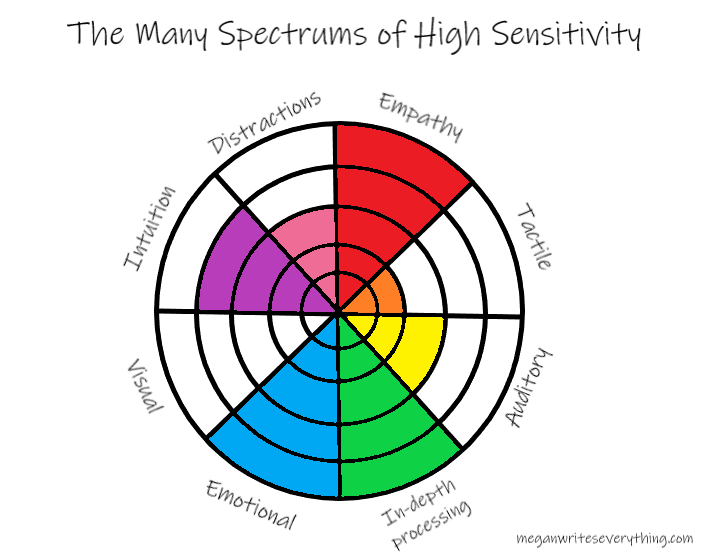This Graphic Shows There Is No One Way to Be a ‘Highly Sensitive Person’
Editor's Note
Check out The Pencil Case group on The Mighty app for creative self-care and connection (journaling, affirmations and more!).
When I first heard of the term “highly sensitive person (HSP),” I took the quiz developed by Dr. Elaine Aron and I actually scored fairly low. Still within bounds to be considered highly sensitive, but not by as much as I would have guessed. I assumed this meant I was simply less sensitive than I thought, and I was just exaggerating and trying to make myself feel “special” by thinking of myself as this super sensitive creature.
Looking back, having such a shame-filled reaction to an internet test is a fairly strong indicator I’m incredibly sensitive. But back then, I saw sensitivity as a spectrum going from low sensitivity to high sensitivity. In reality, there are so many spectrums of sensitivity, and every HSP has their own levels of sensitivity in different areas.
Online, I’ve seen lots of templates like this one to describe how people with conditions like autism or attention deficit/hyperactivity disorder (ADHD) don’t benefit from labels like “high-functioning” or “low-functioning” because they can have vastly different experiences, despite having the same condition. So I thought I’d make my own template for high sensitivity:

From talking with other HSPs, these were the categories I felt encapsulated the highly sensitive experience. For the most part, they’re pretty self-explanatory. Some people are particularly sensitive to tactile, auditory, emotional or visual stimulation like music, food textures, art or emotional movies. I also included distractions because some HSPs are very sensitive to distractions around them, like they can’t ignore the ticking of the clock or the slight tinny sound coming from the TV.
Finally, I included traits like empathy, in-depth processing and intuition because some aspects of being an HSP aren’t just about which types of stimulation you’re particularly sensitive to. Some HSPs find that they are highly empathic, meaning they genuinely feel the emotions of others, while others are highly intuitive, meaning they just get a sense about things, even if they can’t explain why. Other HSPs also find that they process things very deeply. This might lead to slower reaction times, increased metaphorical thinking and more.
Each one of these categories is its own spectrum, and some people might be fairly low on some spectrums, fairly high on others or they may fall in the middle on all of them. All of these iterations are perfectly valid forms of high sensitivity.
Personally, I am the stereotypical HSP, very sensitive to emotions and highly empathic. To show you what I mean, I filled out my own template to demonstrate what my high sensitivity looks like:

When a someone hears about high sensitivity for the first time, I’m probably the type of person they picture as an HSP. We often link sensitivity and emotions, but the truth is, they don’t necessarily go together. I personally know a few HSPs in my life who aren’t actually all that sensitive to emotions, but they are still HSPs because they’re very sensitive to auditory, tactile or distracting stimuli and have amazing intuition and depth of processing.
I’m excited to share this with you all because I think it’s so important to acknowledge how even people who have something in common, like high sensitivity, can still be so different, and that’s OK! It’s OK to be different without some people being “more” sensitive or “less” sensitive. Maybe we’re just sensitive in different ways.
Feel free to fill out your own sensitivity template and share in the comments, on social media, wherever! Just be sure to leave my website in the bottom so others can find it, too.
A version of this story was originally published on Megan Writes Everything.
Original photo by author

